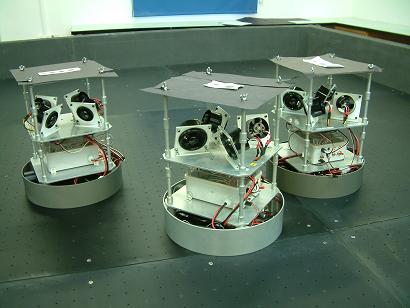The pieces will converge in space to form one satellite that will continue its mission

The European Research Council (ERC) will grant one and a half million euros to the research of Professor Finny Gurfil from the Faculty of Aeronautics and Space Engineering at the Technion, who proposes to launch satellites in parts, so that they create one satellite in space whose components communicate with each other wirelessly. This research grant is considered the most prestigious in Europe, and its purpose is to support groundbreaking research in the fields of engineering and science.
"In unexpected situations, such as damage from space debris, the satellite cannot respond well and continue its original mission, and functional and financial damages are inevitable," explains Professor Gurfil. "For example, if a failure occurs in the payload, the entire system ceases to be usable, and to complete the task, the entire tool needs to be replaced. Such a move is very expensive and takes a lot of time; It is much easier to replace the payload module than to launch a new satellite."
This idea led to a new concept in space engineering - disaggregated satellite systems. Discrete Space Architecture (DSA) consists of several separate modules, which communicate with each other via wireless connections and thus create a single virtual platform. Each module fulfills a defined function, or several such functions: navigation, direction control, power generation and operations related to the payload. The independent modules are able to share resources among themselves and do not have to operate in close proximity, but are required to stay in a relative position, in a way that creates a flight to the HLC.
DSA constitutes a new space architecture, which is expected to be more efficient in the reactive sense; Responsiveness is the ability to adapt to unexpected scenarios that originate from several sources of uncertainty at the different levels of the design and execution of the task. The ultimate goal of the proposed research is to develop innovative technologies that will enable operational flight in the format of DSA;
Specific goals include (a) developing algorithms for semi-autonomous long-range maintenance of the band and the band network, with the possibility of adding modules to the band and the band network, or reducing such modules; (b) finding methods for reconfiguration that guarantees the safety of the band - and functionality in matters critical to the mission, in the face of damage to the network or failures in the various components; (c) planning for dispersal/gathering in the rocket, in order to prevent the risk of space debris; (d) developing logic and means for sharing resources within the band network, with the ability to act in real time; and (e) the verification of the aforementioned algorithms and methods in the Laboratory for Distributed Space Systems, a research laboratory developed by Professor Gurfil. The proposed research will create the infrastructure required for a demonstration in space around 2016.

One response
Why doesn't Israel finance groundbreaking and relatively meager research by investment alone?
Why share such a significant advantage with the Europeans?